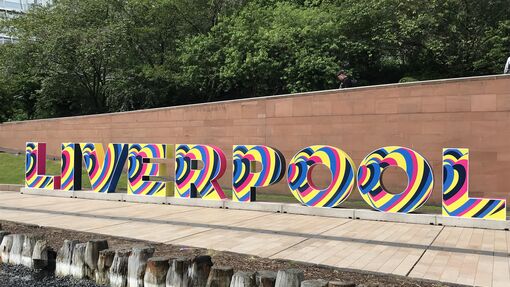How orchestras can support our health and wellbeing
share

Can you tell us a bit about Orchestras Live and what you do?
Orchestras Live is a national producer creating projects and events for communities to access inspiring orchestral experiences, particularly in under-invested areas of the country.
We have numerous co-production partners including Music Education Hubs, local authorities, venues, festivals and sometimes specific community groups. We bring these together with professional orchestras, music leaders, composers and other artists in a wide range of creative collaborations that are shaped and delivered with diverse participants and audiences.
We believe orchestras are for everyone. This belief is based on nearly 60 years’ experience of producing projects rooted in consultation, relevance, shared ambition, learning and sustainability.

How does health and wellbeing fit into your work?
Much of our work is focussed on health and wellbeing in the sense that we hear a lot from project participants and concert audiences about how the experience of live orchestral music is truly enriching for their lives and beneficial for their mental wellbeing.
Many of our partners prioritise social inclusion and engagement, which Orchestras Live supports by producing orchestral activity that engages with marginalised and vulnerable people in their communities. We are constantly exploring and developing ways to do this, through projects that bring people together, celebrate their creativity, develop skills, and strengthen community networks. Often this work involves co-creation, with people supported to write songs and musical material which they can perform alongside an orchestral ensemble. This can be very uplifting, even life-changing, for those involved!
On a strategic level, Orchestras Live is working to shift the level of orchestral work in a health and wellbeing context onto a more widespread, sustained basis, having led on national surveys to clarify the extent and contribution that orchestras are making in the public health sector (Orchestras in Healthcare report) and periodic online events bringing together arts and health programme developers to work towards greater collaboration on workforce development, co-investment and long-term creative activity that benefits patients and healthcare professionals (Orchestras in Healthcare network).
What kind of outcomes and benefits have you seen from people engaging in Orchestras Live?
With dozens of partnerships involving thousands of people each year, we see many kinds of positive outcomes.
In our work with older people living with dementia, a common outcome is that musical creativity enlivens minds, stimulates memories and strengthens relationships with family carers (Creative Journeys).
For younger people, collaboration with orchestral musicians can raise aspiration and support pathways, such as young carers needing respite and creative opportunities, and disabled young musicians who gain skills, insight and confidence to pursue a career in the cultural industries (Able Orchestra).
And intergenerational projects can lead to greater understanding and appreciation between different generations of people, often creating new friendships and community connections (Hear and Now).
“Listening to music always helps my anxiety. Being able to enjoy live music in the company of others brings joy to my life.” [audience member]

What plans and hopes have Orchestras Live got for the future?
The R&D nature of our work in health and wellbeing will include, later this year, a new approach to supporting people living with dementia and their family carers in south Essex. Musicians from Sinfonia Viva will collaborate with artists from Age Exchange and Green Candle Dance to deliver cross-artform workshops on a weekly basis at Brentwood Theatre, creating a ‘company’ with the older participants. Underpinned by academic research, this project will explore in depth how this sustained mixed-artform approach impacts on the lives of the vulnerable participants, including its effectiveness in helping them to remain living in the community instead of at care settings.
In Derbyshire we are pursuing our work with unaccompanied migrant children, again using music and movement as part of a holistic approach to arts engagement. The project uses a process of co-creation that helps young people with significant challenges due to previous experiences in their lives including trauma, separation from family and relocation often across continents, to tell their stories, find social and emotional stability and support a pathway into education and employment.
At Withernsea in the East Riding of Yorkshire, an area of low arts infrastructure, our Classically Yours programme continues with a strand of work by Manchester Camerata. It’ll bring together people at different care settings with students from secondary schools for an intergenerational creative project and public performance at the High School. This will provide vital connections between vulnerable people in a remote coastal community and cement the school’s role at the heart of its community. Further North, we are developing a similar creative project model with Redcar & Cleveland Council.
These are just a few of the plans we have for the coming year. We are also about to appoint three Community Impact Coordinators, one each in the North, Midlands and East of the country, to give us more capacity to develop our work in these regions and open up new partnerships that reach communities in need of inspirational experiences which support their health and wellbeing.














